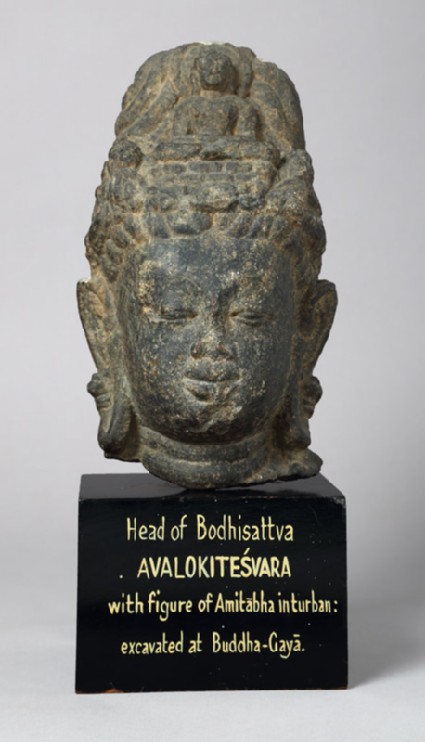Browse: 1 object
- Reference URL
Actions
Head of the bodhisattva Avalokiteshvara
-
Details
- Associated place
-
Asia › India › east India › Bihar › Bodhgaya (place of creation)
- Date
-
c. AD 750
Pala Period (AD 750 - 1200)
- Material and technique
- stone
- Dimensions
- 24 x 14 x 20.5 cm max. (height x width x depth)
- Material index
- Technique index
- Object type index
- No. of items
- 1
- Accession no.
- EAOS.61
-
Further reading
Harle, J. C., and Andrew Topsfield, Indian Art in the Ashmolean Museum (Oxford: Ashmolean Museum, 1987), no. 38 on p. 29, pp. 25, 39, & 49, illus. p. 29
Location
-
- currently in research collection
Objects are sometimes moved to a different location. Our object location data is usually updated on a monthly basis. Contact the Jameel Study Centre if you are planning to visit the museum to see a particular object on display, or would like to arrange an appointment to see an object in our reserve collections.
Publications online
-

Indian Art in the Ashmolean Museum
This head of the Bodhisattva, Avalokịtésvara is here identified by the little figure in the headdress, seated in padmāsana (where one folded leg is placed on top of another) and with hands laid in his lap, palm upwards (dhyāna-mudrā), the gesture signifying meditation. This is quite proper since the figure represents one of the five meditation Buddhas. These are not “historical” Buddhas, such as the Buddhas whose lives paralleled that of Śakyamuni in previous aeons (kalpas), but purely intellectual creations standing for metaphysical concepts. They appear once or twice in the headdress of Gandhara Bodhisattvas, evidence that the great changes in doctrine had commenced, whereby the simple tenets of early Buddhism eventually yielded to the complex construction of what came to be known as the Mahāyāna or Great Vehicle, culminating in the massed pantheons and magical practices of Tibet.
The Bodhisattva wears a jaṭāmukuṭa, a headdress or crown in which the jewelled portions terminate in the interwoven matted locks of the ascetic. It is particularly appropriate to Śiva, with whom Avalokịtésvara shares some iconographic features. The treatment of the neck, with its concentric ribs of fat, was widely adopted as a feature of god-like power and beauty. The exaggeratedly fleshy lips and eyebrows arching high over the eyes are regional stylistic traits which become more marked with the beginning of the Pāla period (c.A.D. 750) in eastern India. For later examples of the Pāla style, [see EAOS.104, EAX.182, and EAOS.56] and, of the Pāla-Sena style, [LI894.12].
© 2013 University of Oxford - Ashmolean Museum

